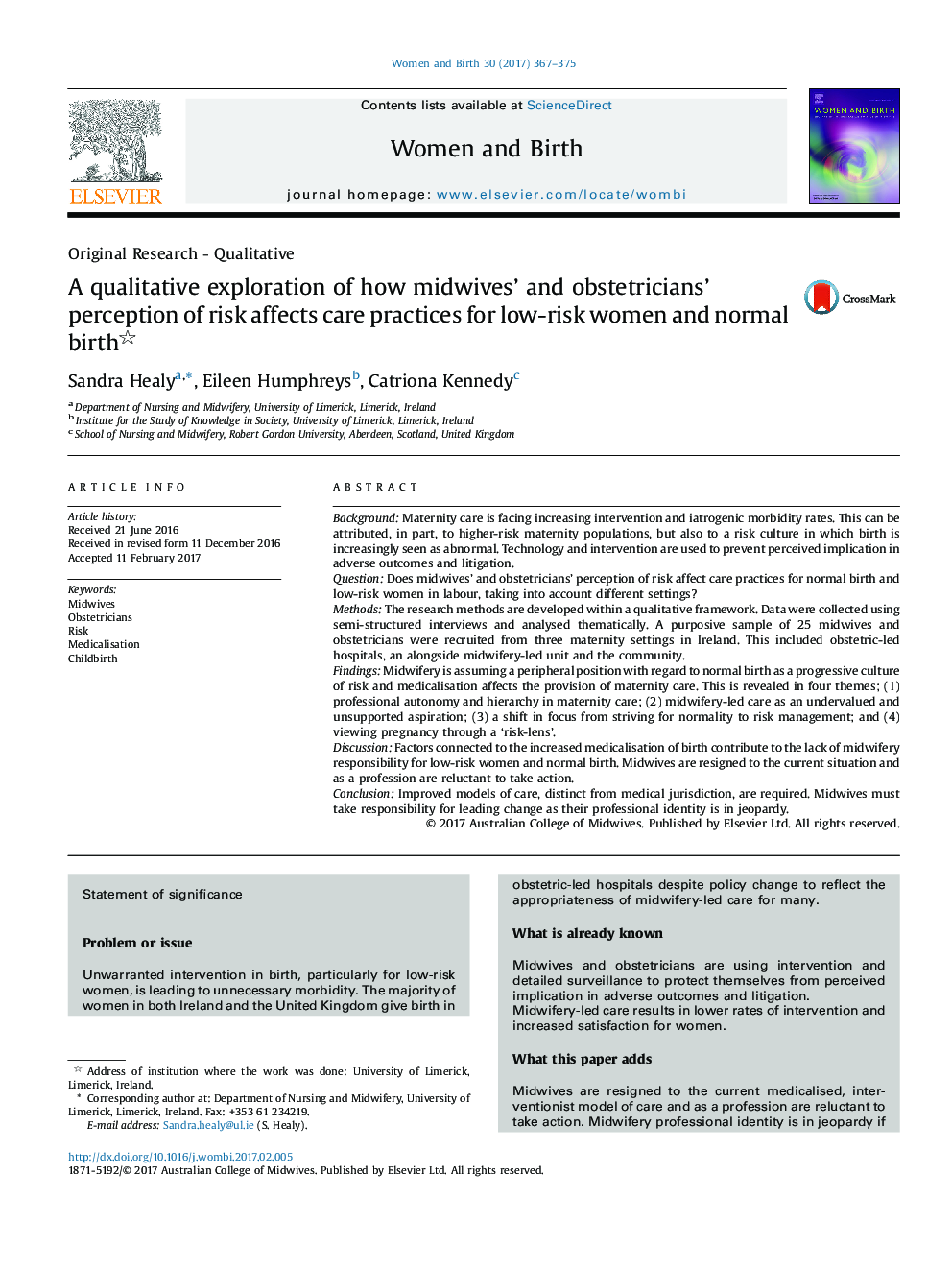| Article ID | Journal | Published Year | Pages | File Type |
|---|---|---|---|---|
| 5565966 | Women and Birth | 2017 | 9 Pages |
BackgroundMaternity care is facing increasing intervention and iatrogenic morbidity rates. This can be attributed, in part, to higher-risk maternity populations, but also to a risk culture in which birth is increasingly seen as abnormal. Technology and intervention are used to prevent perceived implication in adverse outcomes and litigation.QuestionDoes midwives' and obstetricians' perception of risk affect care practices for normal birth and low-risk women in labour, taking into account different settings?MethodsThe research methods are developed within a qualitative framework. Data were collected using semi-structured interviews and analysed thematically. A purposive sample of 25 midwives and obstetricians were recruited from three maternity settings in Ireland. This included obstetric-led hospitals, an alongside midwifery-led unit and the community.FindingsMidwifery is assuming a peripheral position with regard to normal birth as a progressive culture of risk and medicalisation affects the provision of maternity care. This is revealed in four themes; (1) professional autonomy and hierarchy in maternity care; (2) midwifery-led care as an undervalued and unsupported aspiration; (3) a shift in focus from striving for normality to risk management; and (4) viewing pregnancy through a 'risk-lens'.DiscussionFactors connected to the increased medicalisation of birth contribute to the lack of midwifery responsibility for low-risk women and normal birth. Midwives are resigned to the current situation and as a profession are reluctant to take action.ConclusionImproved models of care, distinct from medical jurisdiction, are required. Midwives must take responsibility for leading change as their professional identity is in jeopardy.
